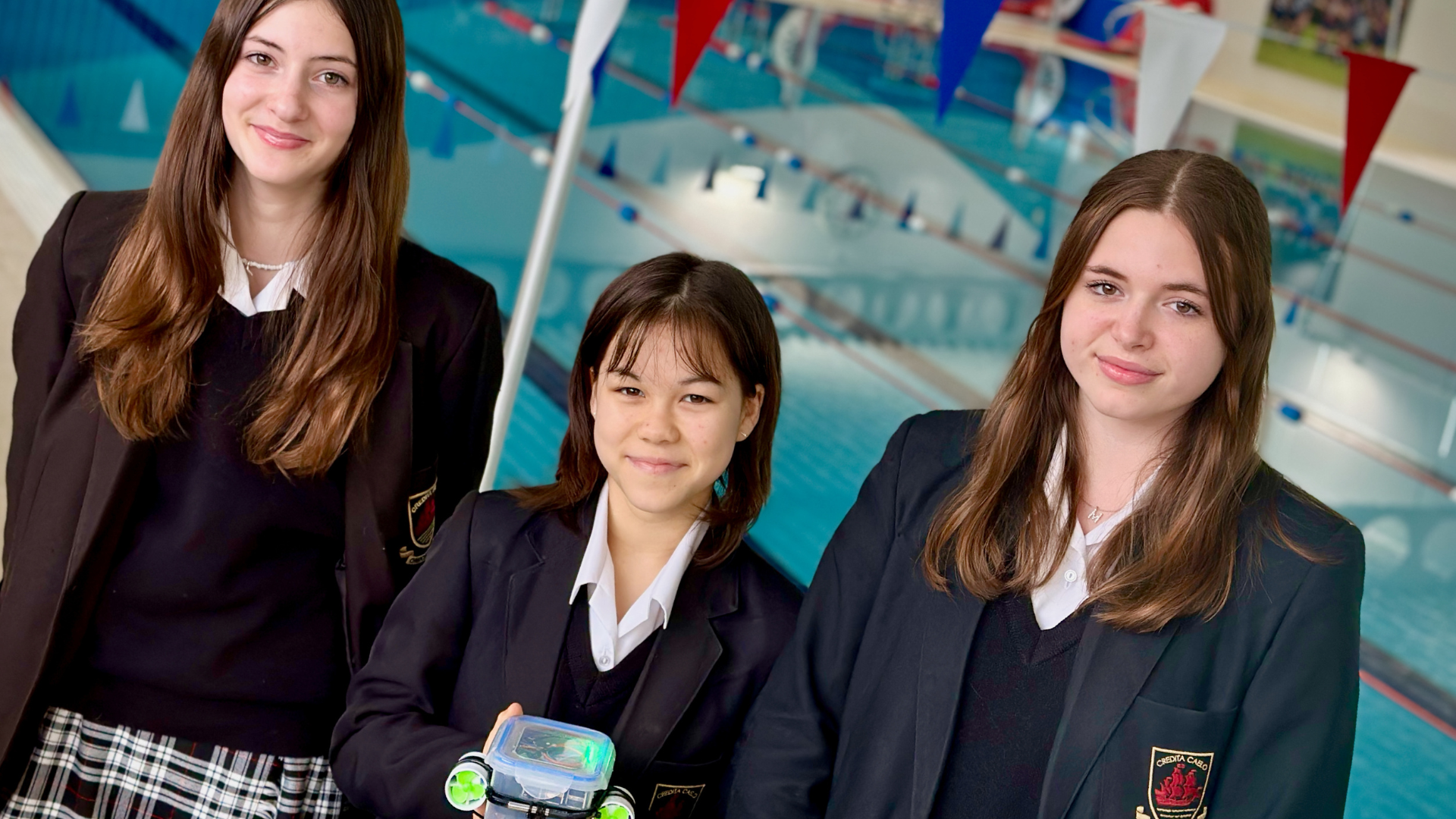Pupils into Finals of STEM Competition with Renewable Energy Submarine

In Computing news, a team of Second Year girls, Jess, Amber and Megan, are pleased to have got through to the finals of the annual PA Consulting Raspberry Pi Competition in London.
In response to the competition brief (click here to read the competition guidelines), a celebration of STEM education which gives schoolchildren the tools and opportunity to invent products that can benefit society, the team designed and built a renewable energy underwater rover.

The finals take place at the beginning of May with the winning prize set at £1000. Below you can watch a video the girls have made which shows how they designed their rover as well as an account they have written on the steps they took and challenges they overcame.
An account written by team Slaylicious:
The SLAYMARINE
To come up with the idea of our submarine, we looked at ways to make natural and renewable electricity. One of the ways we discovered is using thermal energy from the bottom of the ocean and converting it into electricity. We then brainstormed and decided that a submarine with heat sensors to find the warm spots in the ocean so we can find more good places to extract energy would be a great idea.

Thermal energy is important and a very useful source of power that is naturally supplied
The submarine would travel along the bottom of the ocean and detect large areas of hot thermal energy that could be converted to electricity. The led light will change depending on the temperature, bright green (on) meaning lots of thermal energy and not on meaning little because its cold (less than about 22 degrees Celsius). This is so that if there is a diver following along the diver is easily able to tell good areas (warm) and bad areas (cold). Thermal energy is important and a very useful source of power that is naturally supplied. Not only can thermal energy be used adjacent to other renewable energy sources, but it also provides backup power, energy storage, and efficient heating and cooling alternatives.
We 3D printed motor holders and hot glued the wires (so it would be waterproof) into our tupperware box
To make our submarine, first we coded the pi using python so our motors will move in the correct pattern – we used a grid pattern - and so our temperature sensor will record where places are hot and cold. Using python to code our raspberry pi made it really hard and VERY difficult! We had to do a lot of research on how to control our raspberry pi to do what we wanted it to do and lots of trial and error and YouTube videos. Then we 3D printed motor holders and hot glued the wires (so it would be waterproof) into our tupperware box where we will put our raspberry pi so it becomes our submarine! We had to re-wire our pi, which was very fiddly and confusing, into the box instead of onto the computer. Our slay marine is a prototype for what we hope to become a real tiny temperature sensor submarine for people who make energy to use so we can help the world become more renewable and stop using fossil fuels!
To test out our invention we threw it into the swimming pool to see how the motors would work and how the temperature sensor would work.
To test out our invention we threw it into the swimming pool to see how the motors work and how the temperature sensor works, we also placed warm spots in the pool to see how the submarine would react. The way the submarine was designed was that the temperature sensor sends the temperature reading every five seconds and compiles it into a digital file, which can be reviewed after the submarine completes its journey.
Our future goals for the submarine are: led lights wrapped around the sub which change depending on temperature; dark red for hot going to light blue for cold. We also want it to be able to avoid obstacles it faces in the ocean, to prevent damage to the submarine.












.jpg&command_2=resize&height_2=85)









.png&command_2=resize&height_2=85)
.png&command_2=resize&height_2=85)
.png&command_2=resize&height_2=85)
.png&command_2=resize&height_2=85)


.png&command_2=resize&height_2=85)



